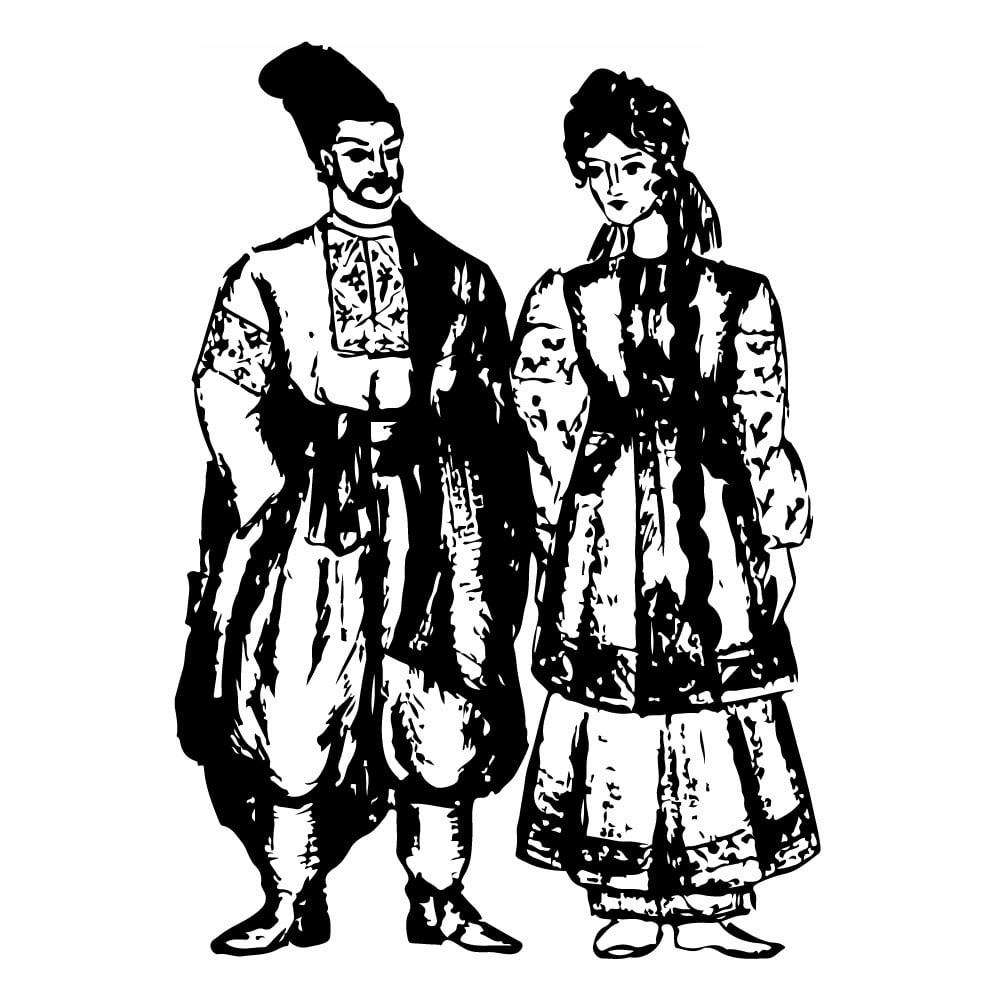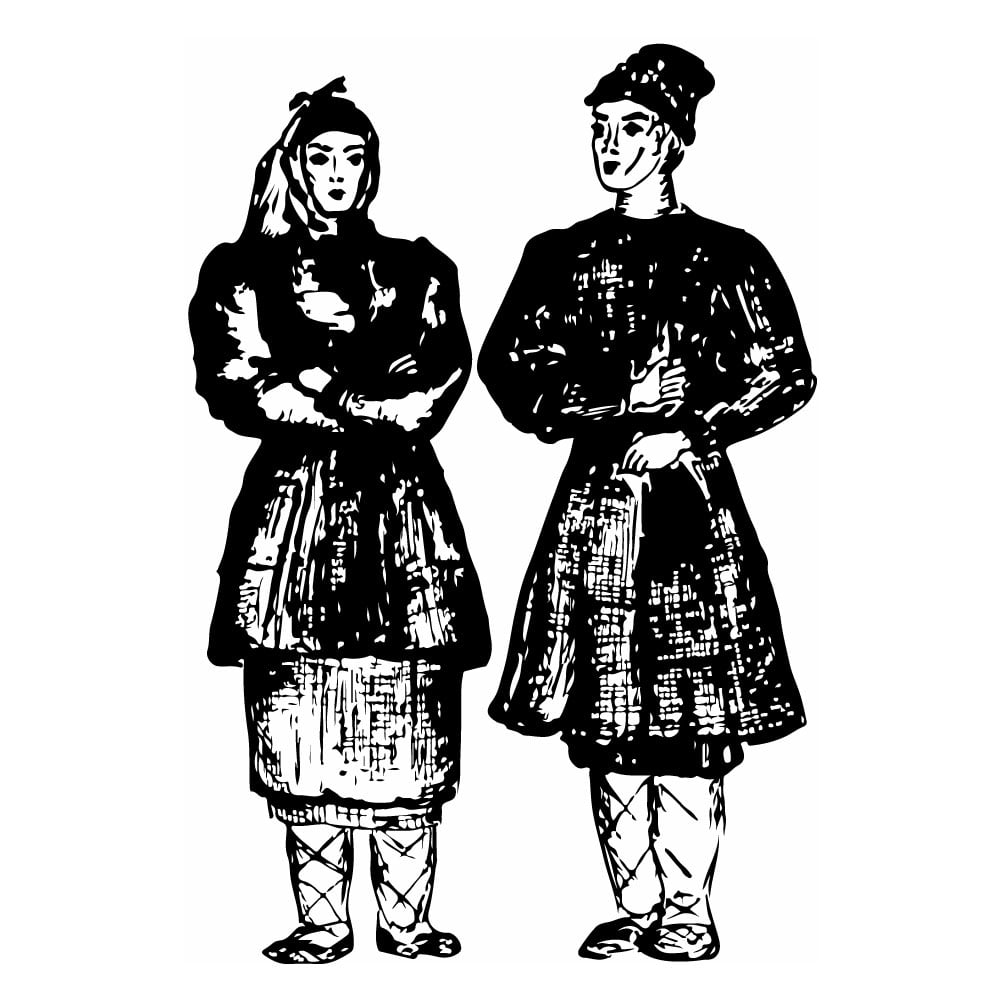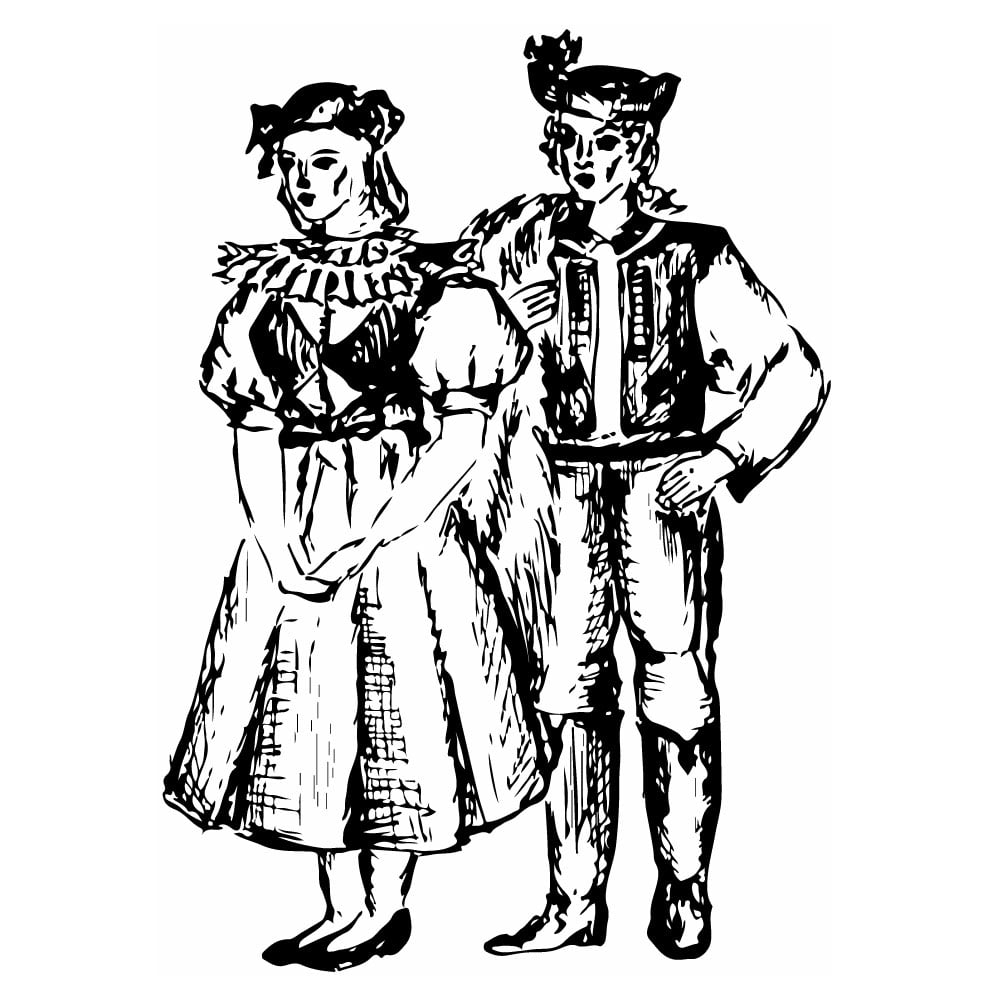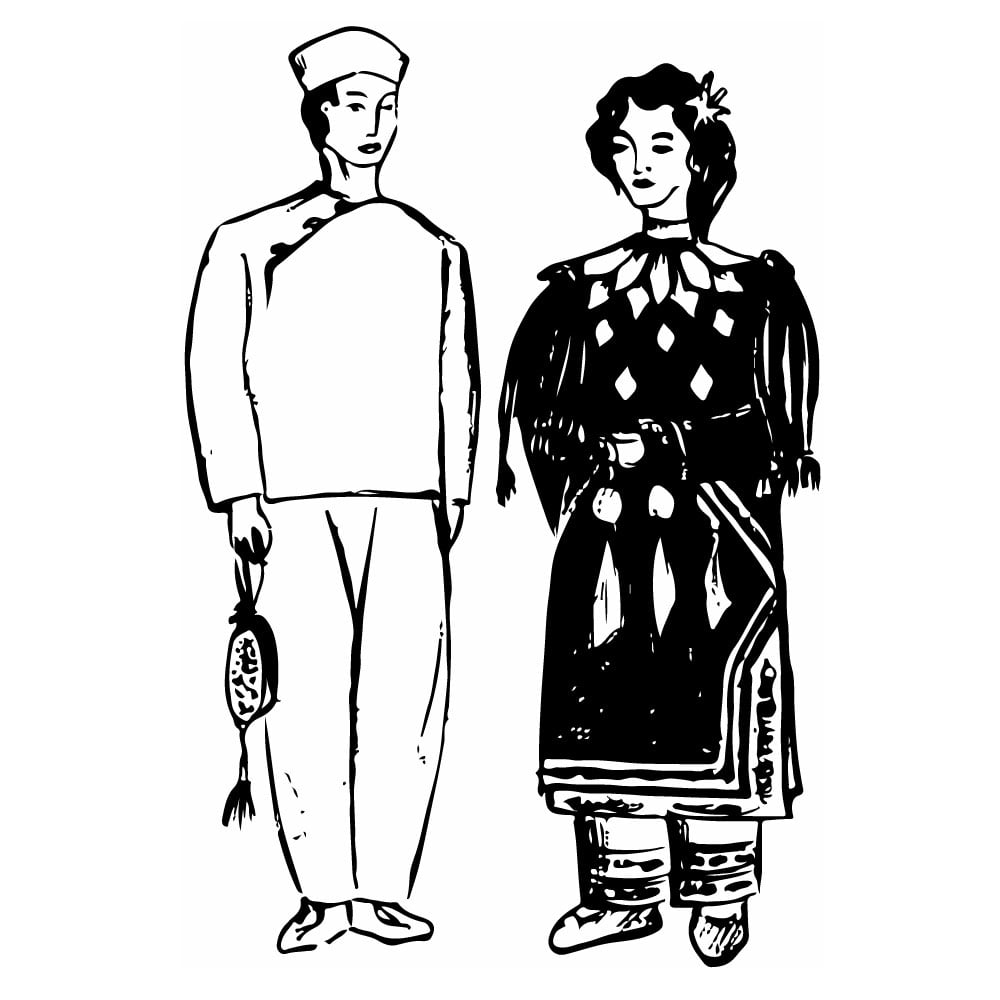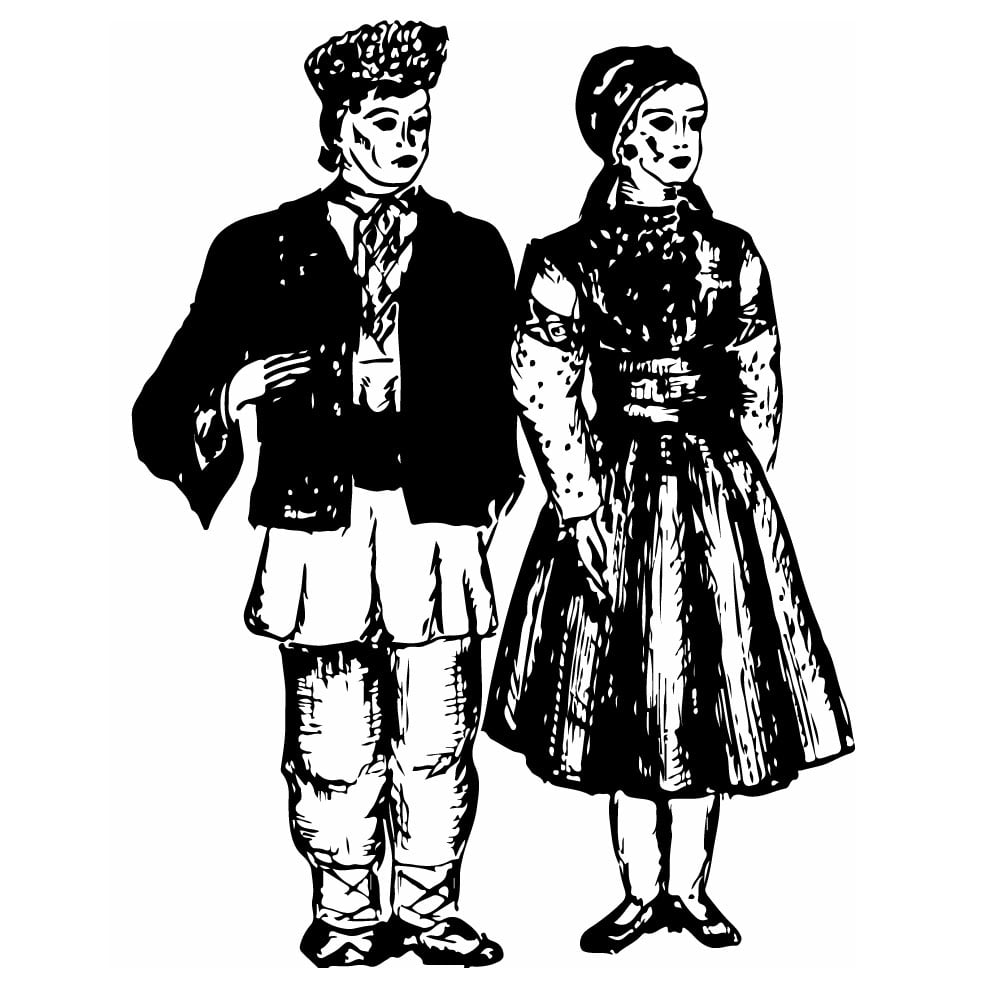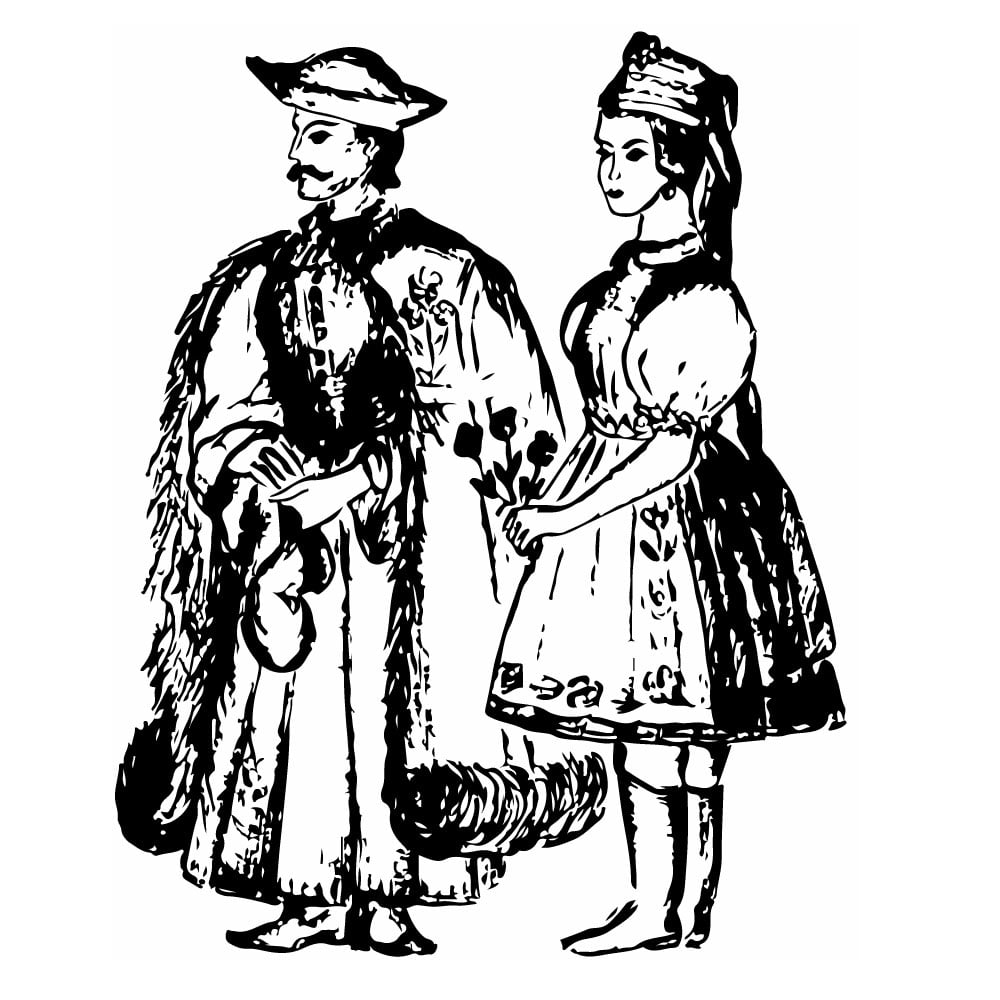Ukrainians
| Population | 51,452,000 |
| Language group | Eastern Slavic |
| Language | Ukrainian |
| Region | Ukraine |
| Religion | Christianity, Judaism |
*Population estimates for 1994
There are 52,104,000 people in the Ukraine. Russia is home for 4,363,000 Ukrainians, while in Kazakhstan 896,000 reside. In Moldova there are 600,000, and 291,000 live in Belarus. Kyrgyzstan has 108,000 Ukrainian people and in Uzbekistan there are 153,000.
Ukrainians belong to Middle European race of European race. Literacy appeared in the fourteenth century on the basis of the Cyrillic alphabet. Ukrainian and Russian languages are widely spread in Ukraine (Polish in the western part of it).
The Ukrainians are considered Christians, in the majority Russian Orthodox; in the West there tend to be more Catholics.
The Ukrainians together with Russians and Belorussians belong to the Eastern Slavs. In Polessie, one may distinguish sub-ethnic groups of the Litoins and the Polishukys and in the Carpathian Mountains the Hutsuls, the Boikys, and Lemkys.
The Ukrainian nationality was formed on the base of the Eastern Slavic population, which was the part of the solitary Old Russian State (ninth to twelfth centuries). During the feudal disperstion, grounds for the formation of three Eastern Slavic peoples was created. These three, Russian, Ukrainian, and Belorussian, were the Old Russian nationality. The Ukrainian nationality has been formed in the southwestern region of Old Russian State. In fourteenth and fifteenth centuries, these were the territories of Kiev, Pereyaslavl, Chernigov-Seversk, Volyn, and Galytsk.
Further consolidation of Ukrainian people continued in spite of the capture (fourteenth century) of the major part of Ukrainian lands by the Poles. Lithuanian feudals in sixteenth-seventeenth centuries, in the next social economic and cultural development, struggle against Polish, Lithuanian, Hungarian feudals and raids of Tatar Khans. The Ukrainian bookish language (i.e. Old Ukrainian) was found. The Ukrainian language acquired its specific Ukrainian features in the process of the formation of Ukrainian nationality and at the same time it preserved its inside dialectic articulation. The Modern Ukrainian Literary language was formed on the basis of Middle Dnepr dialects in eighteenth-nineteenth centuries.
The ethnic and political history of the Ukraine is depicted in their names and self-names.
Alongside the ethnonyms, which originally used belonged to southeastern group – the Ukrainians, “the cossahs, Cossack people,” Western Ukraine (in fifteenth-seventeenth centuries until nineteenth century) preserved its self name “Rus’ki” (“Rusyny”).
The traditional everyday culture is characterized by many of common Slavic features, in spite of the abundance of original Ukrainian features.
The main traditional branches of modern Ukrainian economy are ploughing, gardening, cattle breeding, bee keeping, and fishing play subsidiary role. Various crafts, such as pottery, wood processing, leather stamping play the important role in the national economy.
The folk costume was various and picturesque. Women’s clothes consisted of embroidered blouses (sorochka) and non-sewn garments: derga, zapaska (kind of skirts) and plakhta (from nineteenth century sewn skirt-spidnitsa). When the weather was bad, they wore sleeveless dresses (korsetka, kiptar). Girls plaited their hair, laid them round the head and decorated with ribbons or flowers or put on paper flowers and bright ribbon wreathes. Women wore different caps (ochipok), towel-like headdress articles (namytka) and kerchiefs. Men’s costume consisted of a shirt, which was worn with wide or tight trousers, sleeveless dress and belt.
Straw hats were the headdress for summer and felt or astrakhan hats for other seasons of the year. In autumn and winter men and women wore svyta (coat) and opancha (long flapped clothes from homemade white, gray and black cloth). The rich embroidery and decoration were typical.
The family traditions, especially maternity weddings, with all members of wedding ceremony division of the wedding cake (karavai), followed by singing and dancing were very peculiar and various.
Ukrainian folklore art is rich: graphic (decorative paintings in dwellings, embroidery with its traditional kinds), musical, choreographic, verbal (historical songs, ballads sung by “kobzary” and “lirnyky”), etc.
Here are some quotes from famous Ukrainians.
A lot of pre-Christian legends were kept in the religious outlook of the Ukrainians.
The most spread was the faith in Witch, a woman, who sold the soul to devil and made harm to people and animals. There were also legends about werewolves and wizards. The popular belief in wizards – the magician quacks was also spread among the Ukrainians. Alongside these legends there were legends about people who died unnaturally (drowned men, suicides, and others) and about non-christened children.
Together with the superstitious signs there were also signs based on the practical activity of a man. They were of a national character. Weather and harvest forecasts were the result of centuries old-observation of nature.
Among traditional festivals and customs of country mode of life one may distinguish fixed religious holidays. The church widely celebrates so-called Cathedral or Throne holy days which were established after the name of one or another saint, after whose name the local church was named.
Traditional everyday culture, common for all ethic areas of Ukraine on its base, differs in the variety of local peculiarities, determined by the historic development of some special regions, natural and geographical conditions and processes of the ethnocultural mutual influence. As a result of it, ethnic groups which preserved diversity in culture, everyday life, and language were formed on the lands of Ukraine.
The most famous among them are the Ukrainian mountain peoples called the Hutsuls, the Lemkys, and the Boikys. In the Western regions, Polishukys are found in the region of Ukrainian Plains and Verkhovyntsy in Ukrainian mountains.
Lemkys (settled on both sides of the Beskyd Mountains in the country between the Syan River and the Poprad River, and also to the West of the Uzh River) got their name in sixteenth century as the result of the frequent usage of particle “lem” in the language.
In connection with the considerable migration of the Lemkys into Lviv, Ternopil, Mykholayiv, and other regions, borders of the Lemky ethnic territory are not indicated strictly at present times.
The history of this Ukrainian branch was developed dramatically. After World War II of 1939-1945, in the result of “the regulation” of frontiers between the USSR and its European neighbors, the Lemky territory was divided between several states. Halychyna, the Northern part of its territory, was joined to Poland. On the Southern slopes of the Carpathians, one part of the Lemky territory was joined to Slovakia, while another part was joined to the Ukraine. Within modern Ukraine, the ethnic Lemky territory was preserved only in the Transcarpathians.
The structure of traditional Lemky occupations were formed under the influence of different factors. Agriculture was the dominant trade among them and cattle-rising was another important occupation. The presence of pastures and mountainous valleys promoted the cattle-breeding of cows, oxen, and sheep.
Traditional national dress interlinks both common Ukrainian elements and original local traits. The women’s dress consisted of a flaxen gathered skirt or “spidnytsya” and a gathered shirt made of white, blue, or green fabric. They were decorated at the bottom by colored ribbons or strings. One of the attributes of the women’s dress was a bodice (“lebyk,” “korsetka”) that was a felt or a velvet vest. In the winter, women wore sheepskin coats ornamented with embroidering. Men’s shirts were never embroidered. They wore vests, cloth trousers (“nohavky,” “gachi”), and a wide leather belt (“yugas”).
The Lemky folklore is highly developed. Its most known bits of art is their artistic weaving. Embroidering was another popular bit of art. Fretwork and the manufacturing of artistic women’s bead decorations were extremely spread.
The origin of another ethnic group of the Ukrainian Carpathian people’s name, Boikys (they inhabit the country between the Syan River and the Lomnitsa River and, also, the Uzh River and the Torets River) is also connected with the peculiarities of their language; they use very often particle “boya” (in the meaning of “yes”).
Agriculture played the main part in their farming. According to the local conditions of agrotechnics, climate and soil, the Boikys had the traditional variety of plants and crops they grew up. Among cereals, oats was the main. Pasture farming had also its advantages. They went in for breeding of oxen, goats, and sheep.
National economy called forth the necessity of manufacturing nearly of all the things and goods for everyday life, instruments, tools, clothes, footwear, etc. That is why various handicrafts and trades existed there in the past. Weaving, pottery, tanning, fretwork, etc. were most popular. Ivan Franko, one of Ukraine’s greatest writers, defined strictly the ethnographic features of the Boikys’ material values: “Boikys don’t like decorations, they differ from their neighbors greatly in it, Hutsuls, for example; Boiko is very practical, he sees things from the point of view of their expediency and profit.”
Traditional dress of the Verkhovyntsy (mountainous people) is characterized by the simplicity of its forms and components. Clothes were made of hand-made cloth, wool and sheepskin. The linen and shirts were usually made of cloth too, sometimes even overcoats (“kaptans,” “katsabaikas”) and women’s headdress were made of it. Men’s and women’s overcoats (“siryakys,” “leibykys”) were made of wool, and sheepskin coats of the straight cut and sleeveless jackets (“bundus”) were made of fur.
There are different views on the origin of the name “Hutsul.” Some investigators refer this word (from Moldavian “hots,” “huts” meaning “robber,” “highwayman”) to the mass rebellion movement of national avengers “opryshkys” in the seventeenth-eighteenth centuries. Other investigators consider that this word originates from “kochul” – “shepherd.” The Hutsuls were engaged in cattle-raising, seasonal forest work, rafting timber down the mountainous rivers, etc.
Hutsuls are famous for their artistic handicrafts, mainly carving.
Hutsuls are very emotional people. They have more individuality in character, they like to speak to their own souls. It is just because they have nobody to talk to, “lyasy tochyty.” They prefer separated family life and farming, and it defines the circle of their acquaintances and sweethearts. Face features point out their cold hearts and physical strength. A Hutsul is generous, kindhearted, and brave with the people he knows.
Hutsuls ennoble their souls by omens and rituals. Mountain people know that all people are born equal, but not all of them are equal before the Lord. Their fates and actions are in the Lord’s hands and in the Lord’s power. In their prayers they always thank the Lord for the day run through. Both young and grown-ups attend church.
Polishukys inhabit North of Ukraine, which together with the neighboring area of South Belarus and West part of Bryansk region comprise one of the most peculiar ethnographic regions, the Plains.
In the past it was the country of thick woods and impassable swamps. There, on sand dunes, not far from the rivers and lakes, the Polishukys built their houses, using only the natural gifts. Water gave them fish; otters and beavers lived in the reeds.
National dress intensifies the beauty of the Plains. Until nowadays, a thin penetrating diaper-cloth “serpanok” is made in some regions. They made shirts, aprons, skirts and a headdress “namytkas” out of it. Skirts, aprons, and namytkas were ornamented with red stripes.
Some original local traditions and ceremonies of the Plains villages, which come from the ancient times, attract attention as well.
Many distinctive features are still kept in the verbal folklore. Many unique vesnyankas, kolyadkas, schedrivkas and other ritual songs can still be recorded in some villages.
The Polishukys were engaged into the “nomadic” farming. A peasant cut down trees in the forest a definite area, burned them to ashes and grew crops on that field for several years. Then he left it, preparing in the forest another sown field.
Important changes happened during the last 50-70 years in all spheres of life of Ukraine. There appeared highly developed industry and agriculture, equipped by modern technology. The number of works and office workers is growing persistently, new national intelligencia has grown up. The monuments of Old Russian and national architecture are carefully preserved. The best national traditions are kept in the architecture of modern dwellings. Modern Ukrainian clothes are influenced by European style, but still preserve the best characteristic features of Ukrainian national costume, especially in the countryside.
This is Ad 1

